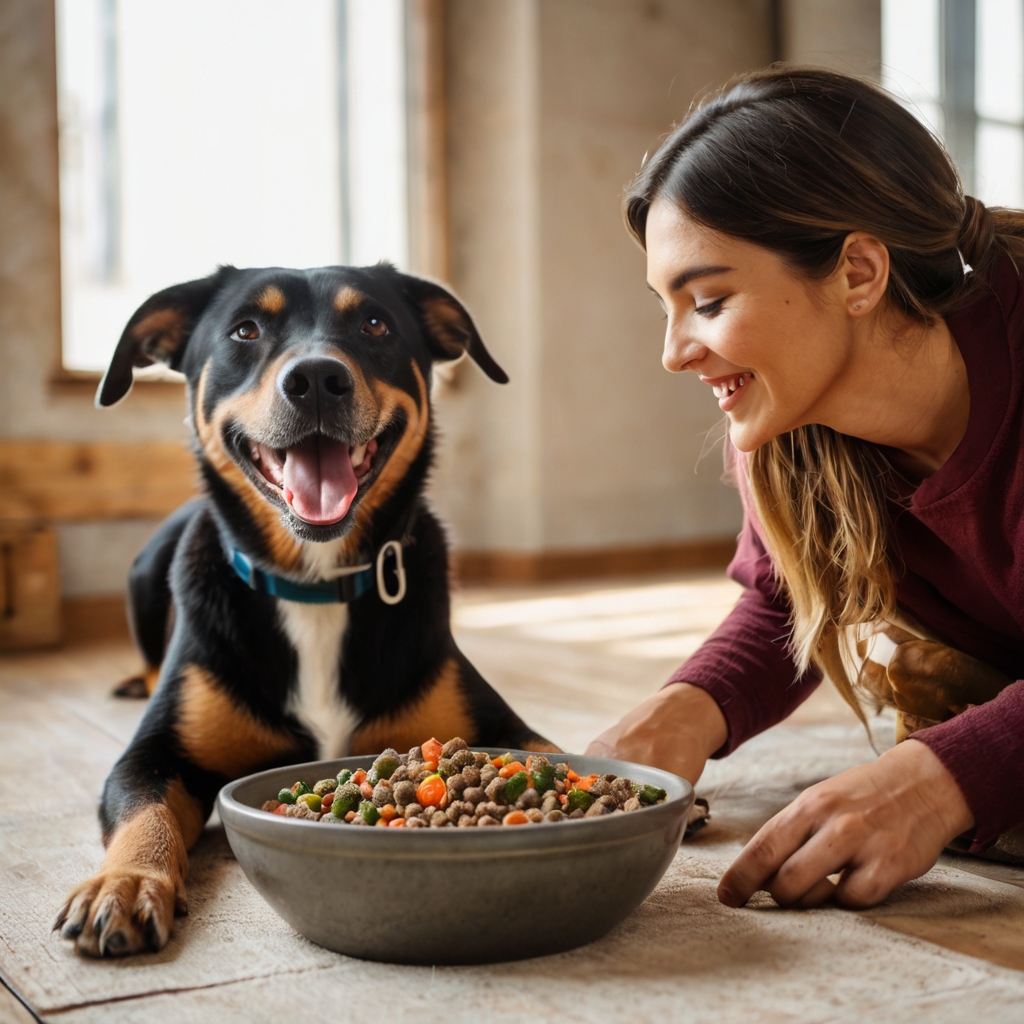Discover the pros and cons of homemade vs. commercial pet food. Learn which one offers the best nutrition and safety for your furry friend.
When it comes to feeding our beloved pets, the question often arises: homemade vs. commercial pet food—which one truly benefits your pet’s health the most? The choice between preparing meals at home and buying ready-made options on the market can significantly impact your pet’s well-being, lifespan, and even their daily energy levels.
In this comprehensive guide, we’ll explore the benefits and drawbacks of both homemade and commercial pet food. We’ll also help you decide what’s best for your dog or cat, based on nutritional needs, lifestyle, and convenience.
🐾 What Is Homemade Pet Food?
Homemade pet food refers to meals that you prepare at home using fresh ingredients. These meals can range from cooked meats and vegetables to raw diets, depending on your pet’s requirements and your preferences.
Benefits of Homemade Pet Food:
- Full Control of Ingredients: You know exactly what’s in your pet’s bowl.
- No Preservatives or Fillers: Many commercial foods contain artificial additives.
- Customizable for Allergies: Homemade meals can be tailored to pets with specific sensitivities.
- Freshness: Meals are prepared fresh, often boosting taste and palatability.
Challenges:
- Nutritional Imbalance: Without veterinary guidance, it’s easy to miss essential nutrients.
- Time-Consuming: Meal prep can be labor-intensive.
- Cost: High-quality ingredients can be expensive when bought in small quantities.
🐶 What Is Commercial Pet Food?
Commercial pet food includes dry kibble, canned wet food, or freeze-dried products produced by pet food companies. These options are formulated to meet the average nutritional needs of pets based on their age, size, and species.
Benefits of Commercial Pet Food:
- Convenient and Time-Saving: Just open and serve.
- Balanced Nutrition: Most commercial brands follow AAFCO (Association of American Feed Control Officials) standards.
- Wider Availability: Can be found in grocery stores, pet shops, and online.
- Shelf Stable: Has a long expiration date.
Challenges:
- Quality Variation: Not all brands use high-quality ingredients.
- Additives: Many include preservatives, dyes, or byproducts.
- Allergens: May contain common allergens like corn, wheat, or soy.
🍽️ Key Nutritional Considerations
When evaluating homemade vs. commercial pet food, it’s important to consider the essential nutrients your pet needs:
- Proteins (chicken, beef, fish)
- Carbohydrates (rice, sweet potatoes, oats)
- Fats (fish oil, chicken fat)
- Vitamins & Minerals (calcium, iron, vitamin E)
- Fiber (vegetables, pumpkin)
If you choose homemade food, consulting with a veterinarian or a pet nutritionist is critical to avoid imbalances that could lead to long-term health issues.
🧪 Safety and Quality
Commercial Food:
- Most reputable brands conduct regular safety tests.
- Some premium options include limited ingredients and grain-free formulas.
- Look for certifications like AAFCO compliance or veterinary endorsements.
Homemade Food:
- Sanitation is crucial when handling raw meats.
- You must avoid toxic ingredients like onions, garlic, grapes, and chocolate.
- Some pet owners mistakenly undercook or over-season food, affecting its safety.
✅ Related article: Toxic Foods for Dogs and Cats
🏥 What Do Veterinarians Say?
Veterinary professionals generally recommend commercial food as a reliable, tested source of nutrition. However, homemade diets can be appropriate when:
- Your pet has specific allergies
- Your vet provides a guided meal plan
- You’re able to commit to regular prep and portion control
Many vets also support hybrid feeding—using commercial food as a base and supplementing with fresh, homemade toppers.
🛒 Cost Comparison
| Type | Average Monthly Cost (Dog) | Average Monthly Cost (Cat) |
|---|---|---|
| Commercial | $30–$80 | $20–$60 |
| Homemade | $50–$150 | $40–$120 |
Homemade diets tend to cost more, especially when using premium meats or organic vegetables. However, if your pet develops health issues due to poor diet, medical bills may outweigh any savings.
🧠 Expert Tip: Look at the Label
When buying commercial food, read the label:
- Look for named protein sources (“chicken” instead of “meat by-product”)
- Avoid artificial colors and sweeteners
- Choose foods with transparent sourcing and certifications
When preparing meals at home, track ingredients, portion sizes, and consistency. Use pet nutrition calculators or apps, and schedule regular vet checkups.
📝 Final Thoughts
So, homemade vs. commercial pet food—which one is better for your pet? The answer depends on your lifestyle, budget, and commitment. Both can be healthy if done properly. The key is to ensure your pet receives complete and balanced nutrition every day.
If you want control and freshness, go homemade—but do it with guidance. If you need convenience and consistency, commercial food is the way to go. In some cases, the best solution is a mix of both.
👨⚕️ External Source: American College of Veterinary Nutrition – Homemade Diet Guidelines


